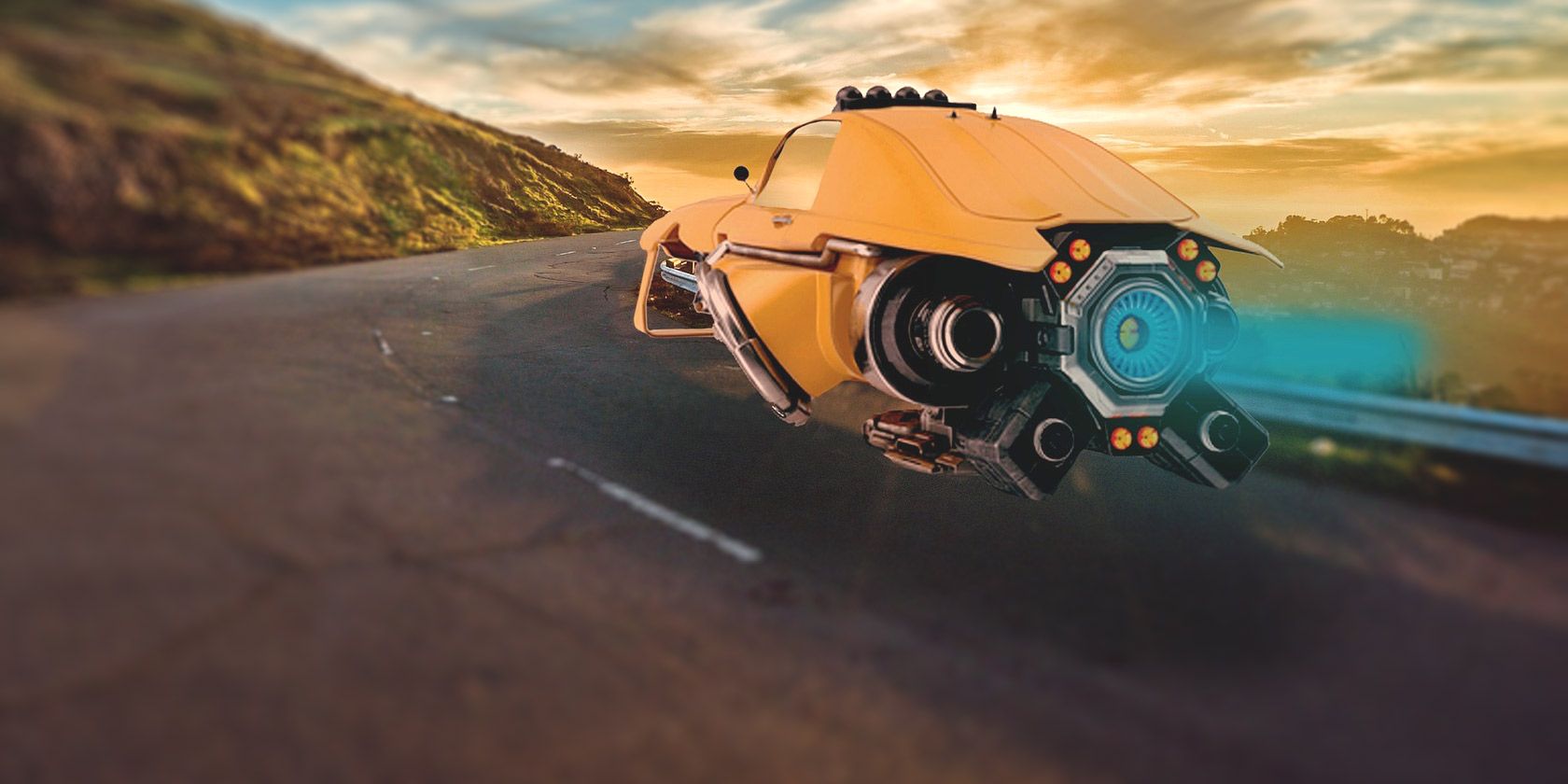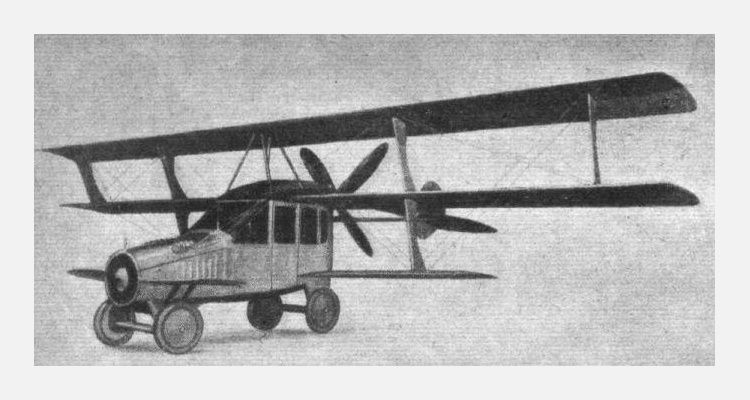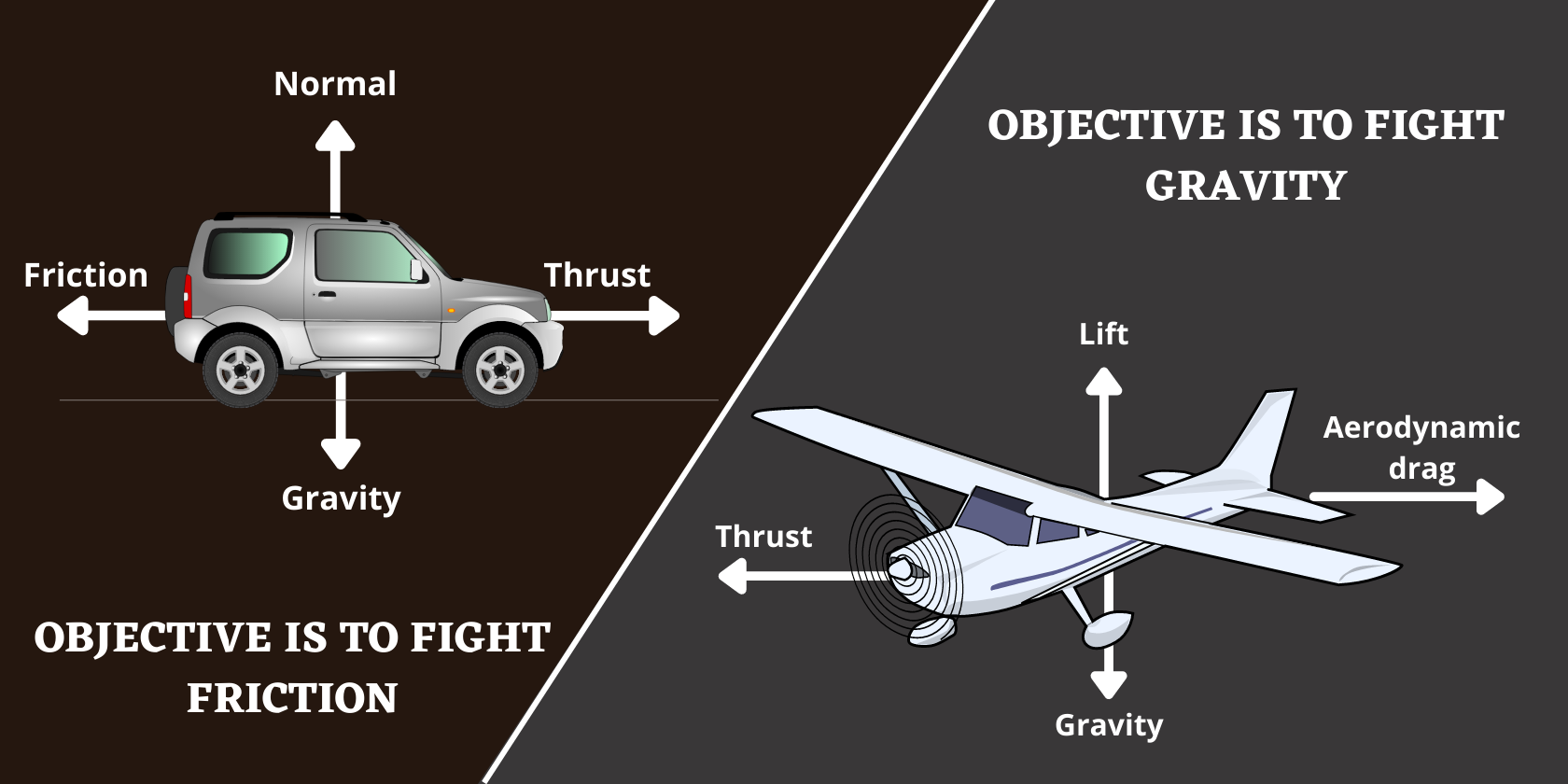When you think of a flying car, you imagine a car taking off in the middle of the road and hovering across the city. It's something science fiction movies have been obsessed with for as long as the genre has existed. More importantly, people have been trying to turn this fiction into a reality for over a century now.
Futurologists of the mid-1900s predicted that flying cars would fill the skies by the end of the 20th century, completely changing how we commute. And yet, we haven't seen any major signs of that happening. At least not yet. Let's find out why.
A Brief History of Flying Cars
In the early 20th century, people saw flying cars as the answer to better transportation. Even when cars had just been available to the public, the lack of a competent road network led people to fantasize about flying cars.
Fascinated by this idea, Glenn Curtiss, founder of the U.S. aircraft industry, built the very first prototype of a car-plane hybrid called the Curtiss Autoplane in 1917, pictured below. The prototype could lift off the ground but couldn't fly. Following this, many prototypes were built and tested but couldn't get any approvals for mass production.
Later, in 1946, the American inventor Robert Edison Fulton Jr. built the Fulton Airphibian. It was the first flying car prototype to achieve certification for safe flight from the Civil Aeronautics Administration (CAA). But due to the enormous manufacturing costs, it never saw the production phase.
Since then, numerous companies and government organizations have been investing in designing a flying car, but only a few could develop working models that function as both a car and a plane.
Current Working Models of Flying Cars
The current working models of flying cars can take off and land on a runway—just like an airplane—while operating as normal cars on the road. They have foldable wings that retract for road travel and unfold for flight.
Successful prototypes include the AeroMobil 4.0, the Klein Vision AirCar, the PAL-V Liberty, and the Terrafugia Transition. The last two models have already acquired certifications and are available for purchase. And the rest have completed numerous test flights and are predicted to be out soon.
Challenges of Building a Flying Car
1. Design
Despite the existence of working models, none of them have a design suitable enough to be eligible for mass production. This is because designing such a dynamic vehicle invites a lot of complicated challenges. A flying car needs to achieve two core objectives: fighting friction by speeding forward and fighting gravity by lifting off.
Hence, both problems require different solutions. Attempting to combine both has resulted in impractical and unsafe designs. Many existing models have exposed flying parts and sensors, making them vulnerable and frail for adverse conditions.
An ideal flying car should take off and land vertically without needing any runway and function on the road as any regular car would. This mode of Take-Off and Landing (TOL) is called Vertical Take-Off and Landing (VTOL) mode.
A VTOL flying car needs a tremendous amount of power for lift-off, a light body for air travel, and a robust structure for the road. Some solutions that are being explored include carbon fiber composites to reduce weight and high energy density batteries to pack more power than a regular battery of the same size.
2. Safety
Apart from the absence of design solutions, another big concern is safety. A malfunction in an airplane can lead to a disaster with a significant death toll. And considering that flying cars hover just above cities, there's an increased threat to passengers and the people below.
Therefore, flying cars need to withstand adverse weather and road conditions to avoid civilian casualties. Plus, getting safety certifications from both road transport authorities and aviation authorities is a challenge in itself.
Moreover, if flying cars were to be available for commercial use, every person driving them would require a Private Pilot Licence (PPL) on top of the regular driver's license. And even then, there is an increased possibility of accidents due to human error.
3. Ethical and Environmental Challenges
With the increasing environmental concerns, sustainability has become a major priority. And flying cars must fit into this narrative if they are to become mainstream. Due to their huge energy requirements, flying cars may add to climate change. Even if we use electricity instead of fuel, the toxicity of the used batteries will still remain a problem.
On top of all that, flying cars also produce loud buzzing noises. This will negatively affect the surrounding wildlife—potentially disrupting the ecological balance—and could cause interruptions for people on the ground.
Another big challenge is the protection of privacy. For instance, a stranger circling their flying car above your backyard at 3 a.m. isn't really something any of us would enjoy. A new set of regulatory rules and guidelines will be needed to tackle situations like this, including restricted flying zones and times and carefully planned air routes.
The Shift of Focus Towards VTOL Aircrafts
For now, manufacturing a functioning and safe flying car that works well on-road as well as mid-air is simply not viable. So, for the time being, tech companies are ditching the road part of that equation and focusing solely on the air part. This brought VTOL aircraft into the limelight. VTOL aircraft are air mobility vehicles that take off and land vertically, but they don't have any on-road capabilities.
Unlike flying cars, making a VTOL aircraft is possible. Abandoning the road capabilities will make it significantly easier to get safety certification from aviation authorities. However, except for the design, all the challenges of flying cars apply to VTOL aircraft too.
In the past decade, several companies, including Joby Aviation, Boeing, Uber, and Toyota have invested in building eVTOL aircraft. These vehicles will run on electricity and be automated to reduce the chances of human error—enhancing safety.
Ideally, they will be able to do everything a self-driving car can do but in the air. If successful, eVTOL aircraft will be used as public and private mobility vehicles. However, there's still a lot to be done before they're finally out for the public to buy.
When Will Flying Cars Be Ready for the Public?
When motor cars first became mainstream around the 1900s, they created massive industries that changed our standard of living forever. But the transition wasn't an easy one. It took decades of innovation to make cars affordable for the average person. Something similar needs to happen with flying cars.
It's one thing to build a vehicle for experts and trained professionals and a whole different thing to build a vehicle for the general public. If flying cars are to become a reality, they need to be fairly easy to use, reliable, and above all, safe to drive (and fly!).
Unfortunately, the technology needed to produce a true flying car that works on land and in the air doesn't exist in today's world. And even if it did, we would still have a dozen of other big concerns to address before they can become mainstream.
The lack of infrastructure, need for new regulations, environmental impact, the uncertainty of public opinion, noise pollution, and so many such problems await. Although there are some working models of flying cars available, their safety and reliability are still questionable.
That said, we are indeed making progress. eVTOL aircraft will be available for the public in the coming decade. And as is the nature of technology, they will get cheaper over time if demand increases and mass production brings down the per-unit cost. Although, calling them cheap would probably still be an overstatement.



